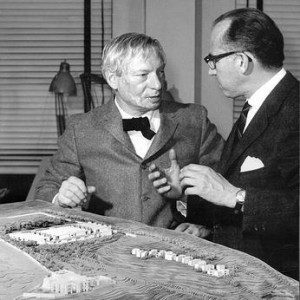Following a recent lecture at the School of Visual Arts in New York, a D/Crit student asked me an interesting question. I had been speaking about the important role that a client can play in the architectural process, specifically how Robert Sainsbury had influenced a young Norman Foster—not least by commissioning him—in the design of the Sainsbury Centre for Visual Arts in Norwich. But what about public clients, the student asked, could the public also be a great client? It is a good question. The history of architecture contains many examples of influential individual clients—Fr. Marie-Alain Couturier at both Ronchamp and La Tourette, Phyllis Lambert at the Seagram Building, Esa-Pekka Solonen at Disney Hall. But what about institutions? Can a bureaucratic committee interact creatively with an architect in something as intimate and personal as the design of a building? The answer, I guess is “not easily.” The willingness to take a leap of faith, resist compromise, say no at the right time as well as yes, rethink a problem at the eleventh hour, and take a risk, requires an individual will. The case of Louis Kahn is instructive. His Richards Medical Building at the University of Pennsylvania is a needlessly complicated design that is further compromised by being a functional failure. Yet only a few years later Kahn designed an outstanding laboratory that has stood the test of time, both architecturally and functionally. Of course in La Jolla, Kahn worked not with a faceless university committee but with a great client—Jonas Salk.


1 thought on “Great Clients”